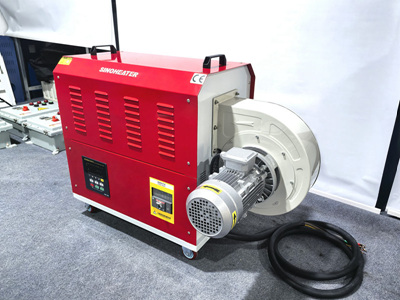Precision Heating Techniques for Solder Joints in Electronics Repair Using Hot Air Guns
Electronics repair demands meticulous control when heating solder joints to avoid damaging components or circuit boards. Hot air guns provide a non-contact method for melting solder, enabling safe removal and replacement of parts. This guide explores temperature calibration, airflow management, and component-specific strategies for optimal results.
Understanding Thermal Response in Solder Joints
The effectiveness of hot air heating hinges on analyzing solder alloy composition and circuit board materials. Traditional leaded solder melts at 183°C, while lead-free alternatives require 217–220°C. Circuit boards with FR-4 laminate tolerate temperatures up to 260°C briefly, but prolonged exposure above 240°C risks delamination.
Multi-layered PCBs demand stratified heating. Apply localized heat to the top layer first, monitoring with a thermal camera or infrared thermometer. For through-hole components, preheat the opposite side of the board to 100–120°C to prevent thermal stress. When working with flexible circuits, limit heat exposure to 3–5 seconds per joint to avoid substrate warping.
Component Sensitivity and Thermal Limits
SMD resistors and capacitors withstand brief heat exposure up to 350°C, but prolonged heating above 300°C may cause electrolyte leakage in tantalum capacitors. Integrated circuits (ICs) with plastic packages require temperatures below 260°C, while ceramic-packaged devices tolerate up to 300°C for short durations.
BGA components demand precise control. Preheat the PCB to 120–140°C before applying focused 280–300°C airflow to the chip. Monitor reflow using a solder paste scope to observe spherical solder balls forming uniformly. For QFP packages, use a 30° angled nozzle to heat lead edges simultaneously, preventing package lifting.
Airflow Management for Delicate Components
Nozzle Selection and Heat Distribution
Conical nozzles concentrate heat for small SMDs like 0402 resistors, while wide nozzles suit larger ICs. For multi-pin QFN packages, use a rectangular nozzle covering all ground pads simultaneously. When working near temperature-sensitive components (e.g., MEMS sensors), shield adjacent areas with aluminum foil or heat-resistant tape.
Pulsating Heat Delivery
For thick copper layers on power PCBs, alternate between 5-second heat bursts and 3-second pauses. This prevents excessive heat penetration to underlying layers. When removing connectors with plastic housings, apply intermittent heat while gently wiggling the component to avoid breaking solder joints prematurely.
Humidity and Thermal Conductivity
Controlled humidity (40–50% RH) enhances heat transfer. In dry environments, pre-mist the PCB’s reverse side with deionized water to prevent static discharge and improve thermal conductivity. For high-thermal-mass components like inductors, combine hot air with a preheater set to 80–100°C to reduce thermal shock.
Component-Specific Heating Strategies
Surface-Mount Devices (SMDs)
When removing 0603 resistors, apply 340–360°C airflow at 1–2 cm distance while rotating the nozzle in a circular motion. For micro-BGA chips, use a 1.2 mm nozzle at 280°C with nitrogen gas to prevent oxidation. After heating, quickly lift the component with vacuum tweezers to avoid re-solidification.
Through-Hole Components
For axial-lead resistors, heat both leads simultaneously for 3–5 seconds using a wide nozzle. When removing transformers, preheat the PCB to 100°C, then apply 380°C airflow to the leads while gently rocking the component. For PCBs with plated-through holes, limit heating to 8–10 seconds to prevent barrel cracking.
Connectors and Sockets
When desoldering USB ports, apply 350°C airflow to the ground pins first, then progress to signal pins. Use a heat sink clip on adjacent components to prevent damage. For SIM card sockets, focus heat on the plastic frame’s edges while pulling the connector upward with tweezers.
Safety and Documentation Protocols
Thermal Monitoring Systems
Attach a non-contact infrared thermometer to the hot air gun nozzle to maintain precise temperature control. Set alarms for thresholds (e.g., 260°C for FR-4 boards). Document all temperature readings and heating durations in the repair log.
Ventilation and Fume Extraction
Older PCBs may release harmful particles when heated. Position the hot air gun’s exhaust port toward a fume hood or HEPA-filtered vacuum system. Wear NIOSH-approved respirators when working on circuits suspected to contain lead-based solder.
Emergency Cooling Procedures
Keep a supply of chilled distilled water and absorbent pads nearby. If overheating occurs, immediately discontinue heating and apply cool water through a fine-mist sprayer. Never use ice, which could cause thermal shock. For fire risks, keep a Class D fire extinguisher accessible.
By integrating precise thermal control, component-specific techniques, and rigorous safety measures, technicians can effectively heat solder joints while preserving circuit integrity. This method reduces reliance on mechanical force, aligning with modern electronics repair ethics.



